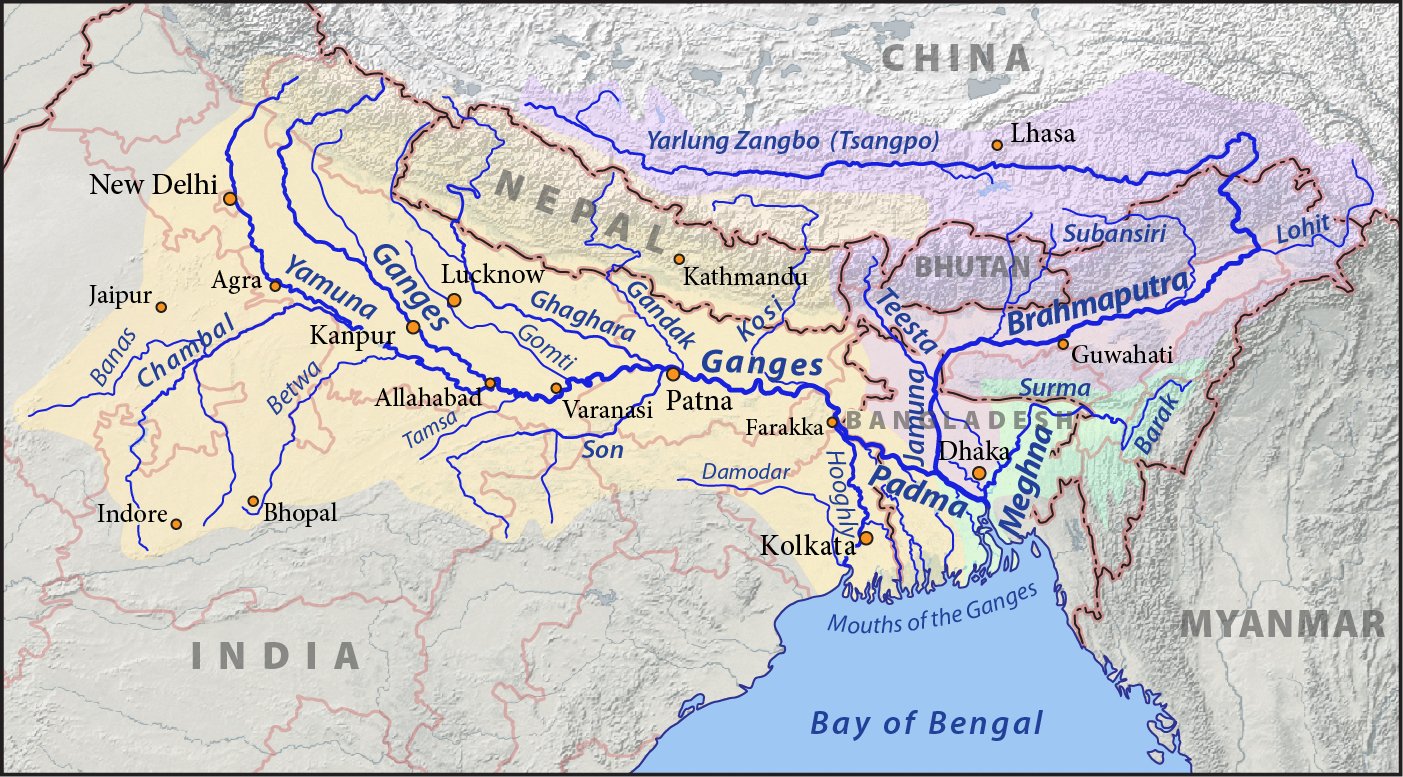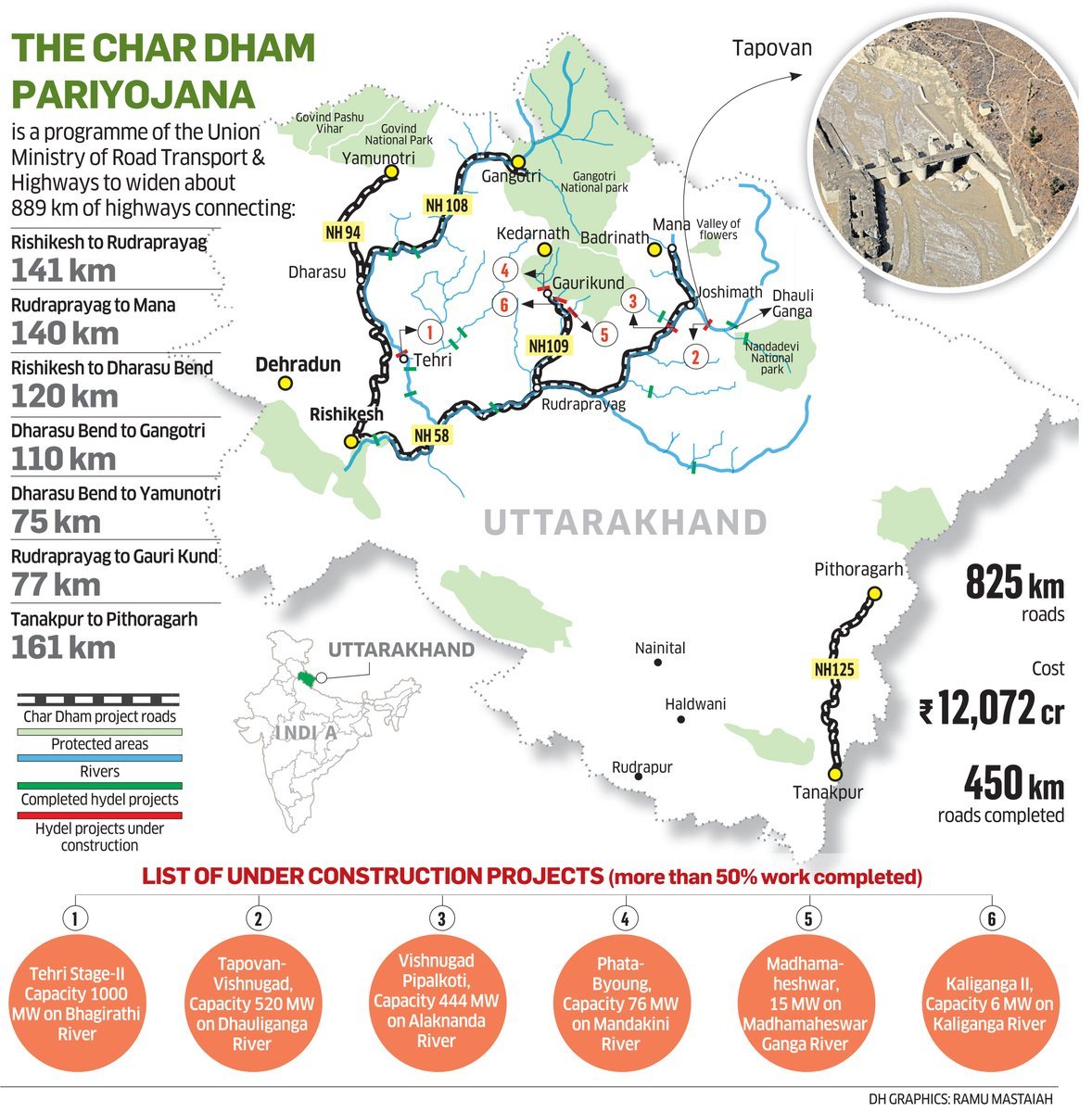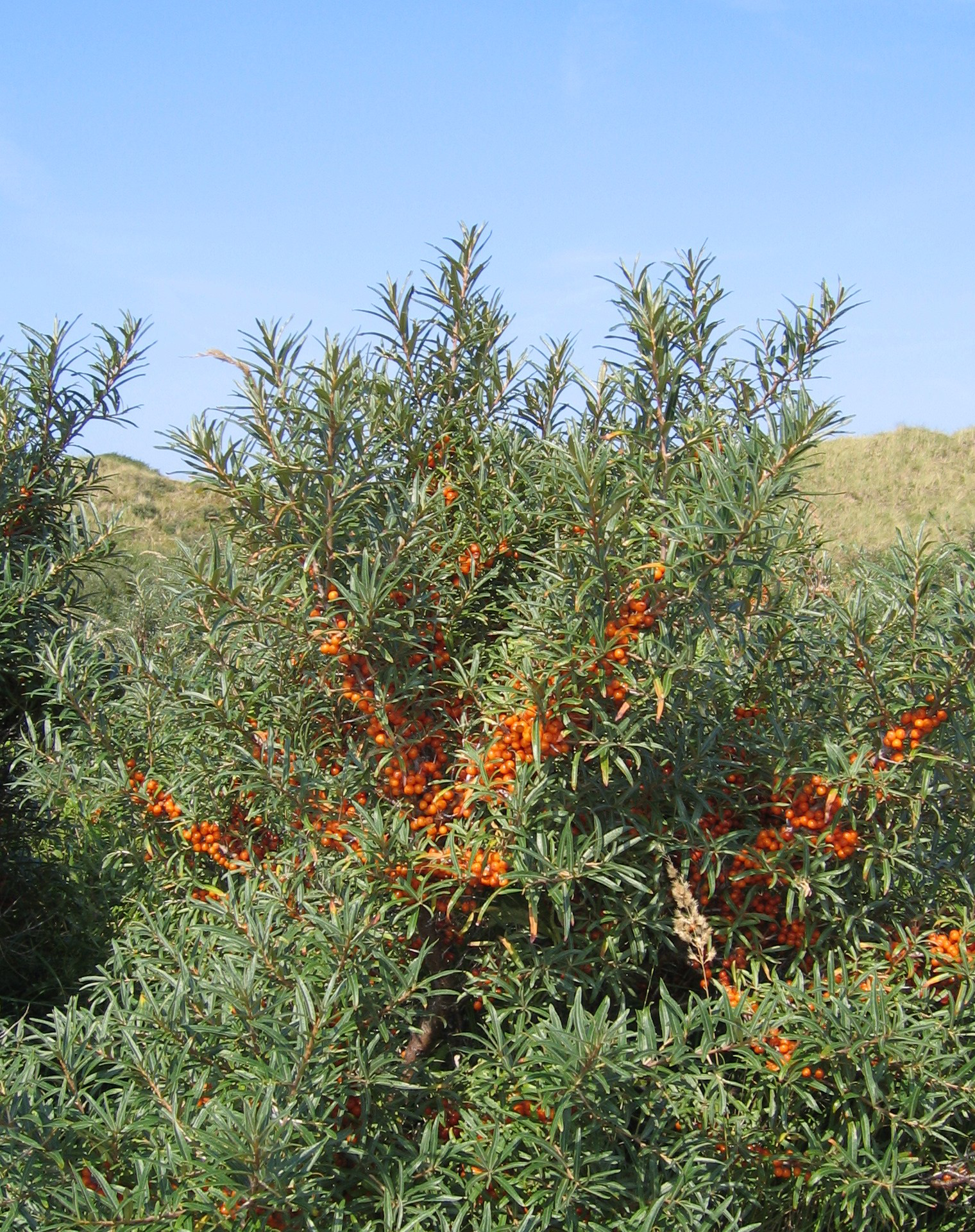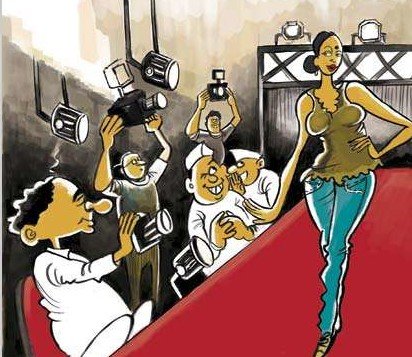
Current Affairs November 09, 2023: Good Samaritan, LEAP AHEAD Initiative, Transition to Green & Clean Economy, Genome Editing, Subansiri River
Subscribers of "Current Affairs" course can Download Daily Current Affairs in PDF/DOC
Subscribe to Never Miss an Important Update! Assured Discounts on New Products!
Must Join PMF IAS Telegram Channel & PMF IAS History Telegram Channel
{GS2 – IR – India-US} INDUS-X Initiative
- Context (TH): The 1st INDUS-X Investors meet was recently held in Delhi ahead of the 2+2 Indo-US Ministerial Dialogue.
INDUS-X Initiative
- It is an initiative under the Initiative on Critical and Emerging Technologies (iCET).
- It is led by India’s Innovations for Defence Excellence (iDEX) and the Office of the Secretary of Defence (OSD), USA.
- It is hosted by the US-India Business Council (USIBC).
- Objective:
- To foster collaboration and innovation between Indian and US defence startups.
- To strengthen collaboration between governments, businesses, and academic institutions in strategic technology and the defence industry.
- Significance:
- It will help India achieve its target of $5 billion in defence exports by 2025.
- It will lead to employment generation & promote global peace, security, and prosperity.
Initiative on Critical and Emerging Technologies (iCET)
|
{GS2 – IR – Regional Groupings} Indo-Pacific Maritime Domain Awareness (IPMDA)
- Context (IE): The Indo-Pacific Maritime Domain Awareness (IPMDA) Initiative was launched recently by the QUAD (India, Japan, Australia, USA) at the 2022 Quad Leaders’ Summit in Tokyo.
- IPMDA is a technology and training initiative to enhance maritime domain awareness in the Indo-Pacific region and increase transparency to its critical waterways.
- It will harness technology to provide partners across Southeast Asia, the Indian Ocean region (IOR) and the Pacific with near real-time information on activities occurring in their maritime zones.
{GS2 – IR – US-Russia} Conventional Armed Forces in Europe (CFE) Treaty
- Context (TH | IE): Following Russia’s formal withdrawal, NATO announced the formal suspension of a Cold War-era security treaty.
- The Treaty on Conventional Armed Forces in Europe (CFE) was signed in Paris in 1990.
- The treaty imposes limitations on conventional arms and equipment to stop Cold War rivals from building up forces that could be used in a swift assault.
- It established comprehensive limits on key categories of conventional military equipment in Europe (from the Atlantic to the Urals) and mandated the destruction of excess weaponry.
- It eliminated the USSR’s overwhelming quantitative advantage in European conventional weapons.
{GS2 – MEITY – Initiatives} LEAP AHEAD Initiative
- Context (TH | PIB | IE): The Ministry of Electronics & Information Technology (MeitY) launched the LEAP AHEAD (Launchpad for Tech Entrepreneurs towards Accelerated Growth and Pioneering AHEAD) initiative for startups.
LEAP AHEAD Initiative
- It is a collaboration of Software Technology Parks of India (STPI) and The Indus Entrepreneurs (TiE).
- Eligibility: Startups involved in software product development, registered with DPIIT under the Startup India program and have demonstrated revenue generation and external investment.
Benefits
- Start-ups can receive funding support of up to ₹ 1 Crore.
- Comprehensive three-month mentorship program.
- Personalized start-up guidance through one-on-one mentorship sessions with seasoned investors.
Software Technology Parks of India
|
The Indus Entrepreneurs (TiE)
|
Start-up
- Start-up, as defined by the Department for Promotion of Industry and Internal Trade (DPIIT), refers to:
- An entity incorporated or registered in India not prior to 10 years.
- Annual turnover not exceeding INR 100 crore in any preceding financial year and
- Working towards innovation and development of products, processes or services or, if it has a scalable business model with a high potential of employment generation or wealth creation.
- The start-up ecosystem includes incubators, start-up accelerators, venture capitalists, private investors, foundations, entrepreneurs, universities, government, corporations, mentors and the media.
Challenges Faced by Startups
- Lack of diversification: >90% of start-ups are concentrated in capital-intensive technology sectors rather than labour-intensive sectors like manufacturing, agro-processing, etc.
- Regional concentration of startups in expensive metros like Bengaluru, Mumbai, and Delhi, while Tier 2 & 3 cities are still in nascent stages.
- Inadequate R&D: Expenditure on R&D has stagnated due to a lack of incentives & a suitable ecosystem and poor links between local companies, MNCs and academic institutions.
- Archaic intellectual property & innovation scenario: It has led to a long process of registration of patents and massive pendency of applications.
- India produces fewer patents per capita than China, USA, Japan, etc.
- Impact of COVID: There is a drastic fall in investments, with a FICCI survey highlighting that only 8% of start-ups received funds as per deals signed pre-Covid.
Way Forward
- Enable easy access to financial services and address challenges related to IPRs and taxation.
- Strengthening incubation and acceleration programmes by fostering collaboration between startups, research institutions and academia.
- Knowledge-sharing platforms: Networking events allow startups to connect with industry professionals, potential partners, investors, and mentors.
- Encourage flexible business models by easing local regulations. For example, only a few companies, like Ola and Uber, successfully navigated the policy hurdles in India, while many others failed.
- Promote cutting-edge platforms to connect consumers and businesses to optimise logistics and delivery operations to reshape how goods and services are delivered in India.
{GS2 – MoRTH – Laws} Good Samaritan
- Context (PRINT): Piyush Pal, a documentary filmmaker, met with an accident and lay bleeding on the road for 30 minutes with no one paying heed. He later succumbed due to excess blood loss.
- The incident exposes the lack of legal awareness among the public about the Good Samaritan law instituted in 2016.
- A Good Samaritan is a person who, in good faith, without expectation of reward, voluntarily comes forward to assist a person injured in an accident or crash.
What is Good Samaritan Law?
- Good Samaritan Law protects individuals who assist road accident victims from harassment.
Need for Good Samaritan Law
- People are hesitant to help injured accident victims on roads due to fear of police harassment, detention at hospitals, and prolonged legal formalities.
Timeline
- In 2012, a PIL was filed in the SC, requesting the court to safeguard Good Samaritans who come forward to help the injured.
- In 2014, the SC directed GoI to issue necessary directions to protect Good Samaritans.
- In 2015, the Ministry of Road Transport & Highways issued guidelines to protect Good Samaritans.
- In 2016, India’s Supreme Court used its unique powers under Article 141 (a Law declared by the Supreme Court to be binding on all courts) to transform the Good Samaritans guidelines into law.
{GS2 – MoWCD – Schemes} Poshan Bhi, Padhai Bhi Programme
- Context (TH): The National Institute of Public Cooperation and Child Development (NIPCCD) recently organised a training programme on ‘Poshan Bhi, Padhai Bhi’.
Poshan Bhi, Padhai Bhi Programme
- The Ministry of Women & Child Development launched it to strengthen Early Childhood Care and Education (ECCE) at anganwadis nationwide.
- The ECCE is planned under the New Education Policy and is essential to Mission Saksham Anganwadi and Poshan 2.0.
- The National Institute of Public Cooperation and Child Development (NIPCCD) trains the Anganwadi workers.
- The programme provides for
- Mother tongue as primary teacher instruction medium.
- Different types of teaching-learning material (visual aids, audio aids, audio-visual and bodily-kinesthetic aids) to Anganwadi Sevikas.
Objectives
- To transform Anganwadis into nutrition hubs and education-imparting centres.
- To ensure that India has the world’s largest, universal, high-quality preschool network, as suggested by the National Education Policy 2020.
- To ensure holistic child development (physical and motor development, cognitive development, socio-emotional-ethical development, cultural/artistic development) as outlined in the National Curriculum Framework.
Mission Saksham Anganwadi and Poshan 2.0
Components under Poshan 2.0
|
{GS2 – Polity – IC – Elections} Electoral Bonds Scheme
- Context (IE): The SC reserved its judgment on the challenge to the Electoral Bonds Scheme.
- The Electoral Bonds Scheme (EBS) was introduced during the 2017 budget session to promote transparency in funding and donations received by political parties.
- Electoral Bonds are an interest-free instrument like a Promissory Note.
- These bonds were introduced in 2018 to bring transparency to the political funding system.
Eligibility
- A citizen of India or a body incorporated in India will be eligible to purchase the bond.
- Political parties registered under section 29A of the RPA, 1951 and secured a minimum of one per cent of votes polled in the last general election for the LS or a Legislative Assembly are eligible to receive funding via electoral bonds.
Features of the Electoral Bonds
- It doesn’t carry the name of the payee. However, the bond purchaser needs to submit KYC docs.
- Once purchased, it cannot be cancelled, and no amount will be refunded to the Purchaser.
- SBI is the sole authorised bank for selling Electoral Bonds in Indian Rupees only.
- Such bonds are sold in multiples of Rs 1,000, Rs 10,000, Rs 1 lakh, Rs 10 lakh, and Rs 1 crore.
- Electoral Bonds have a life of only 15 days. After 15 days, it can’t be encashed; instead, the amount will be deposited in the PM Relief Fund.
- They can be purchased either Singly or Jointly with other Individuals, but not more than three Applicants per Application Form.
Important Amendments under EBS
- For the introduction of EBS, four legislations were amended through the Finance Acts of 2016-17:
- RPA 1951: Exempted political parties from sharing details of contributions received through electoral bonds.
- Companies Act, 2013:
- Exempted companies from declaring their contributions to political parties.
- Removed the cap on corporate donations. Earlier, the company could donate up to 7.5% of the average net profits of the company in the last three years.
- Foreign Contributions Regulation Act, 2010 (FCRA): Permitted foreign companies with subsidiaries in India to fund Indian political parties.
- Income Tax Act, 1961
Issues with the Electoral Bonds Scheme (EBS)
- It brought opacity rather than transparency to election funding.
- The anonymity of electoral bonds is only for the broader public and opposition parties. It leaves the door open for the government to know who funds its opponents.
- Removing the cap on corporate donations:
- Allow unlimited funding by Indian corporations.
- Open the possibility of shell companies being set up to make donations to political parties.
- Exempting political parties from sharing details of contributions received through electoral bonds violates the right to information.
- Foreign contributions to Indian political parties could expose Indian politics and democracy to international lobbyists who have their own agendas.
- Anonymous donations may benefit certain companies that make donations to political parties.
- EBS benefits the party in power and the national parties. Growing asymmetry in corporate donations to political parties will have serious implications for the health of democracy.
|
Electoral Trusts (ET) Scheme
|
Anonymity of the Electoral Bonds
- Electoral Bond is a bearer bond that can be transferred to anyone.
- The transferring of the said bond cannot be practically prohibited.
- Such a bond can change multiple hands before it reaches a political party.
- Suppose ‘A’ purchases a bond worth 100 crores by submitting the KYC, and if ‘A’ physically hands over the bond to ‘B’ and ‘B’ gives it to ‘C’, there is no control over the transaction between ‘A’ and ‘C’.
RBI opposition to Electoral Bonds Scheme (EBS)
- The RBI opposed the EBS on four grounds:
- It is superfluous and can be replaced by existing banking instruments (cheques, drafts, etc).
- It can be misused for money laundering.
- It does not bring transparency as it gets transferred to various hands before donation.
- It does not align with Section 31 of the RBI Act, 1934.
Section 31 of the RBI Act
|
GoI’ stand on EBS
- EBS promotes transparency in funding and donations received by political parties!
- The EBS extends the benefit of confidentiality to the contributor.
- It promotes the contribution of clean money (!) and adherence to tax obligations.
- The citizens do not have the right to information under Article 19(1)(a) of the IC regarding the funding of a political party.
|
|
History of Corporate Funding in India
Need for Corporate Funding
Issues of Corporate Funding
|
{GS3 – Envi – Agri} Urban Agriculture
- Context (IE): Experts have highlighted the need for climate-smart Urban Agriculture at the inaugural edition of the African Conference on Agricultural Technology (ACAT) held in Nairobi, Kenya.
- Urban Agriculture involves utilising available urban spaces such as rooftops, balconies, community gardens, and vacant lots for agricultural purposes.
Benefits of Urban Agriculture
- Reduced carbon emissions by minimising fossil fuel consumption associated with transportation, packaging, and food selling, thus helping in realising the goal of the Paris Agreement.
- Environment sustainability: Hydroponic technology can save up to 90 per cent of water consumed.
- Promotes circular economy: Composting food scraps and using them as nutrient-rich soil amendments reduces landfill waste and supports circular economy principles.
- Enhances food security: Given the fact that 55% of the world’s population resides in urban areas & 79% of the food produced is destined for consumption in the cities.
- Employment opportunities: 800 million people worldwide are involved in urban and peri-urban agriculture activities.
|
Challenges Associated with Urban Agriculture
- Limited lateral space and High land values.
- Contaminated soils and water.
- High costs (water, infrastructure, permits, housing, etc.)
Way Forward
- Providing policy support like land subsidies, tax benefits, and streamlined approval processes, incorporating urban agriculture into urban planning policies and regulations.
- Institutional support: Establish partnerships between local governments, academic institutions, and NGOs for technical support and research.
- Promote vertical integration: Explore vertical integration of urban agriculture systems to optimise space utilisation and increase productivity.
{GS3 – Envi – Air Pollution} Evaluation of Odd-Even Scheme
- Context (IE | LM | IE): As the Air Quality Index (AQI) in Delhi remains severe, Delhi government has announced the return of the odd-even scheme.
- The odd-even scheme is recommended under Stage IV of the Graded Response Action Plan.
What is Odd-Even Scheme
- When odd-even is in force, cars can ply only on alternate days, based on their registration number.
- So, odd-ending number cars will drive on odd dates, while even-ending number cars on even dates.
- The goal is to reduce road traffic by about half to lower AQI levels.
- The scheme was tried out twice, in 2016 and 2019.
|
Vehicular Emission: The Main Culprit of Delhi

- During the peak time of burning, farm fires contribute around 40% of PM 2.5 in Delhi air.
- Farm fires, however, burn in a small window. When taken for a whole year, their contribution is less than 3% to Delhi’s air pollution.
- Local sources cause the bulk of Delhi’s air pollution, and vehicles contribute up to 30% of PM 2.5 concentration annually.
- Vehicles also emit air pollutants like PM 10, carbon monoxide, nitrogen oxides, sulphur dioxide.
Benefits of Odd-Even Scheme
- Reduced air pollution
- Reduced traffic congestion
- Increased public transportation use
- Improved public health: Reduction of nitrogen oxide (NO2) sigficantly reduces emergency situations.
- Emergency room visits increased more with higher NO2 levels than with PM2.5.
- Short-term exposure to NO2 led to a 53% increase in the number of patients.
Limitation of the Odd-Even Scheme
- Limited impact: Odd-even scheme has been able to reduce only around 5 to 10% PM 2.5 in Delhi.
- Exemptions: It exempt certain vehicles like two-wheelers, taxis, etc., which contribute to emissions.
- Public inconvenience
- Impact on businesses
- Enforcement challenges
- Lack of infrastructure and public transport
Way Forward
- Odd-even scheme has shown only limited success in the reduction of air pollution.
- But such scheme can be beneficially used for:
- Raising public awareness and inculcating behavioural changes
- Emergency situations of severe air pollution
- Other long term measures which should be used of reducing vehicular emission are:
- Setting fuel efficiency standards
- Alternative fuels
- Setting vehicle emissions standards
- Promotion of Electric Vehicles (EVs) and hybrid vehicles
- Improved traffic management
- Vehicle maintenance and inspection programmes
- Ridesharing and carpooling
- Improve public transportation
{GS3 – Envi – Air Pollution} Smog Tower
- The decision comes after Delhi suffocates in severe air pollution for several days.
- A smog tower is a large-scale air purification device that reduces air pollution.
- They draw in polluted air from the surrounding environment. Advanced filtration systems, such as high-efficiency particulate air (HEPA) and activated carbon filters, capture air pollutants. Then, the cleaned air is released back into the environment.
Benefits of Smog Towers
- Quick respite from severe air pollution
- Real time monitoring air pollution
- Complements other air pollution control measures

Limitations of Smog Towers
- Limited coverage area: Smog towers typically cleans only within a radius of a few hunderd metres.
- High installation and maintenance Costs
- Limited effectiveness for certain pollutants: Most effective only for particulate matter (PM) removal.
- Potential environmental impacts: E.g., energy consumption, waste generation, and noise pollution.
- Temporary solution: Do not address the root causes of pollution like vehicle and industrial emissions.
- Low operational capacity: E.g., the Connaught Place smog tower could reduce only around 12-13% of PM at a distance of 100 m from the tower.
{GS3 – Envi – CC Impact} Climate Change Displacing Native Species
- Context (IE): Extreme weather from climate change may disproportionately harm native species over non-native species, according to a new analysis.
Reason Why Non-Native Species Fare Well in Extreme Conditions
- Rapid reproduction and growth: It helps non-native species to establish in alien environments.
- More adaptable behaviour and physiology
- Higher tolerance for disturbances
- Climate change can create new ecological niches for non-native species
Reason Why Native Species Do Not Fare Well in Extreme Conditions
- Limited genetic diversity: Native species are often adapted to a specific climate and so have a limited genetic pool.
- Lack of co-evolved relationships: Native species have co-evolved relationships, like plants relying on specific insects for pollination. Climate change disrupts such relationships, endangering survival.
- Competition from non-native species
- Habitat loss
Examples of Climate Change Affecting Native Species
- Coral bleaching
- Mountaintop extinctions: Rising temperatures push high-altitude species uphill.
Why Native Species Must be Protected from Climate Change
- They maintaining ecosystem function: Native species pollinate plants, disperse seeds, recycle nutrients, and control pests. Without native species, ecosystems will collapse.
- Native species are a source of food, medicine, and other resources for humans
{GS3 – Envi – RE} Transition to Green & Clean Economy
- Context (TH): According to the recently released Production Gap Report, governments worldwide have planned to double their production capacity of fossil fuels in 2030. This contrasts with the goal of limiting warming to 1.5 °C under the Paris Agreement.
Production Gap Report, 2023
- It is prepared by the
- Stockholm Environment Institute (SEI),
- Climate Analytics, E3G,
- International Institute for Sustainable Development and
- United Nations Environment Programme
- It was first launched in 2019.
- It tracks the discrepancy between governments’ planned fossil fuel production and global production levels consistent with limiting warming to 1.5°C or 2°C.
- The report analyses emissions trends for 20 major fossil-fuel-producing countries: Australia, Brazil, Canada, China, Colombia, Germany, India, Indonesia, Kazakhstan, Kuwait, Mexico, Nigeria, Norway, Qatar, Russia, Saudi Arabia, South Africa, UAE, UK & USA.
Green Economy
- UNEP defines it as a low-carbon, resource-efficient economy, one that results in improved human well-being and social equity while significantly reducing environmental risks and ecological scarcities.
- It focuses on economic activities, infrastructure and assets that allow reduced carbon emissions and pollution, enhanced energy and resource efficiency, and prevention of biodiversity loss.
Global Progress Towards Green Economy

Global Share of Green Energy Generation

India’s Progress Towards Green Economy
- The MNRE is working towards achieving 500 GW of installed electricity capacity from non-fossil sources by 2030.
- Present Installed Capacity: More than 170 GW till 2022.
- Projection: The Institute for Energy Economics and Financial Analysis (IEEFA) and Climate Energy Finance (CEF) estimate that renewable energy capacity will reach 405 GW in FY 2029-30.
India’s Proposed ‘Panchamrita’
|
Need for India to Transition to Green Economy
- To safeguard climate ‘tipping points’: To reduce the impact of climate change, which can significantly alter the life system on earth, a transition to a green economy is indispensable.
- Emissions Reduction: The IPCC AR6 report suggests that global GHG emissions must be reduced by 43% by 2030 and reach net zero CO2 emissions in the early 2050s.
- Reduce crude oil imports as the country imports approximately 80% of its energy requirements.
- Meet Paris Agreement goals: To achieve the GHG emission target committed under Intended Nationally Determined Contributions (INDCs), it is necessary that India transition to a green economy.
- Fulfil international commitments: It can help to fulfil India’s international commitments under Panchamrita, such as achieving Net-Zero carbon emissions by 2070.
|
|
India’s updated NDCs |
NDC– 2015 |
NDC – 2022 |
| Reduce the emission density of its GDP | By 33 to 35% by 2030 from 2005 level | By 45% by 2030 from 2005 level |
| Electric power installed capacity from non-fossil fuel-based energy | About 40% | About 50% |
| Create an additional carbon sink |
2.5 to 3 billion tonnes of CO2 equivalent |
Same as earlier |
Challenges Associated with India’s Transition to Green Economy
- High initial costs: Implementing clean technologies often requires significant upfront investments like land acquisition, establishing charging stations, retrofitting buildings for energy efficiency, etc.
- Built-up Infrastructure: Many economies rely heavily on built-up fossil fuel-based transportation and energy generation infrastructure.
- Coal accounts for 44% of India’s primary energy sources and 70% of its power generation.
- Spatial equity concerns: Transitions affect near-term fossil-dependent jobs, shrink the state’s capacity to spend on welfare programs, and thus exacerbate existing economic inequities.
- Intermittent nature of renewable energy: For example, solar and wind energy are intermittent in nature, meaning their generation fluctuates based on weather conditions.
- ‘Growth’: To become an advanced economy by 2047, India would require an annual GDP growth rate of 9.6%, which would raise the net GHG emissions 10.5 times from the levels of 2021-22.
Way Forward
- Supportive policies and incentives: This includes feed-in tariffs, tax credits, grants, and subsidies for renewable energy projects and energy-efficient practices.
- Shifting to renewable energy demand patterns: Solarisation of agricultural electricity demand; electrification of diesel-powered Micro, Small, and Medium Enterprises (MSMEs) etc.
- Promoting circular economy: This can contribute to the clean economy by minimising waste, promoting resource efficiency, and reducing environmental impact.
- Financial innovation: For this, taxation on high GHG emission industries, international cooperation, budgeting green and sustainable bonds, etc. can be utilised.
{GS3 – Infra – Dams} Landslide Drying Dammed Subansiri River
- Context (IE | TH | HT): The Lower Subansiri Hydroelectric Project faces a major setback as a large part of hill collapses into the dam’s reservoir.

Lower Subansiri Hydroelectric Project (LSHEP)
- LSHEP is located on the Subansiri River on the Arunachal Pradesh-Assam border.
- It is a run-of-the-river project by the National Hydro Power Corporation (NHPC).
- It consists of a concrete gravity dam (dams that rely on their own weight to resist the force of water).
- This 2,000MW project started in 2005 and was due to be completed in 2010.
- However, the project was delayed due to opposition over its potential environmental impact.
- Once completed, it will be the India’s largest hydroelectric project.
Subansiri River
|
How a Dammed River Flows
- After selecting a dam location, a temporary coffer dam (earthen barrier) and diversion tunnels (DTs) are constructed upstream to reroute the water during construction.
- After dam construction, DTs are closed, and water flows through spillways which are gated holes in the dam wall that ensure regulated release of water.

What Happened in LSHEP Which Lowered the Flow of Subansiri River
- Due to a lanslide, the only operational DT of LSHEP gets blocked.
- This halted the downstream water flow into the Subansiri River.
The Mistake NHPC Committed
- In 2022, the Central Electricity Authority (CEA) recommended examining the impact of DTs on the project site’s slope stability.
- The region is a landslide prone area and earlier also DTs were blocked and damaged multiple times.
- Yet the NHPC ignored the recommendation and relied on the sole functional DT to release water.
|
Concerns with LSHEP: India’s Future Largest Hydroelectricty Project
- Seismic Zone: The entire northeast India lies in the seismic Zone 5 which means these area are vulnerable to the highest intensity earthquakes.
- Landslide: Northeast India is prone to landslides due to heavy rainfall and tectonic activity.
- Floods: The project will potentially increase flood risks downstream in Assam. Flooding frequency and erosion have risen since dam construction resumed in 2019.
- Social concern: Extensive land acquisition for the project will disrupt the livelihoods and settlements of indigenous communities like Idu Mishmi and Adi, leading to displacement.
- Biodiversity loss: It will destroy the habitats of numerous plant and animal species. The dam will obstruct fish migration upstream, disrupting their spawning and feeding areas.
|
- Strain on financial resources: Due to the delay, the project cost escalated from the initial estimate of about Rs 66,000 million in 2002 to about Rs 199,000 million in 2020.
Way Forward
- The GoI is trying to make the Northeast India the powerhouse of India. While doing so the costs (ecological, economic, social, etc.) of such projects must be considered. Apart from this, the sustainability of the projects in the region must also be assessed.
{GS3 – S&T – Biotech} Genome Editing
- Context (TH): The Foundation for Food & Agriculture Research has provided a grant to the University of California to conduct field trials of gene-edited rice that, in laboratory settings, conserve more water than non-edited or wild-type rice.
Genetic Modification (GM) Technology
- It allows the transfer of genes for specific traits between species.
- Using laboratory techniques, GM tech embeds a new trait that does not occur naturally in the species.
- It involves mutation, insertion, or deletion of genes.
- GM crops in India: BT cotton, BT Brinjal, DMH 11 Mustard.
- BT cotton is India’s only genetically modified (GM) crop approved for commercial cultivation.
- Till now (except DMH-11), no GM food crop has ever been approved for commercial cultivation in the country.
GM mustard Dhara Mustard Hybrid 11 (DMH 11)
Associated Terminologies
|
Applications of Genome Editing
Health Sector
- Disease Treatment: Genome editing is used in cell models in research labs to investigate diseases, treat cancer and life-threatening diseases through gene therapies.
- Targeted drug delivery: It means to selectively transport drugs to targeted tissues, organs, and cells through various drug carriers.
- Synthetic biology: The technology can facilitate the engineering of organisms to produce valuable chemicals and pharmaceuticals.
Agriculture & Livestock Sector
- Resistant varieties of crops: Gene editing can help develop varieties of plants that are better able to survive and thrive under flood or drought. It can help enhance biosecurity like disease-resistant animals, preventing the spread of zoonotic diseases.
- Reducing allergens: GM crops have the potential to make life easier for people with food sensitivities and allergies, e.g., low-gluten wheat could make it possible for more people to enjoy bread.
Environmental Sector
- Application in renewable sources: It can facilitate the making of biofuels and can have potential applications in renewable energy and sustainable manufacturing.
- Conservation: The technology has allowed scientists “to expand the genetic diversity of endangered species, control invasive species, and enhance species’ resiliency to a changing climate.”
Concerns associated with Genome Editing
- Genetic diversity: Genetic diversity can be a threat from cloning and a threat to future generations. For, e.g., China’s gene-edited babies.
- Genome editing is primarily cost-inefficient.
- Concern over equity: Given the expensive and technologically complicated technologies, the current and coming gene therapies are limited to a few countries.
- Ecological concerns: It can propagate genes with negative traits throughout a population, leading to severe ecological consequences. For, e.g., Gene-edited mosquitoes.
- Safety concerns: Changes can lead to unexpected results that may be adverse in nature. It may further cause serious health risks like toxicity, inflammation and even cancer.
- Bioweapons: Gene editing can be used to make bio and chemical weapons that can be used against other countries in case of war.
Way Forward
- Promote research and innovation to fully understand the potential benefits and risks of human genome editing before enrolling it to its full potential.
- Developing a restructured framework that addresses the safety norms and related ethical concerns.
- Promoting awareness among the people from the grassroots level to effectively manage the fields associated with genome editing applications.
- Formulating guidelines to manage GM crops to address the challenges arising from using such crops.
- Increasing investment in the sector (through budget allocation and based on the PPP model) to develop the technology in India and be on par with other countries such as China.
- According to NITI Aayog, India’s spending is less than 1% of GDP on R&D, while that of most technologically proficient nations is over 2% of GDP.
Genome India Project
|
{Prelims – Sci – Universe} Moon is 40 Million Years Older
- Context (IE): Scientists by analysing the Apollo-era moon dust collected in 1972 found that moon is about 40 million years older than previously thought.
- They reanalysed crystals from lunar sample which was known to contain 4.2 billion-year-old zircon.
Zircon
- Zircon is the oldest mineral known to exist on Earth.
- It is a silicate mineral that is found in igneous rocks, metamorphic rocks, and sedimentary rocks.
- It is a valuable mineral because of its hardness, durability, and resistance to weathering.
- It is used in a variety of industrial applications, including abrasives, refractories, and gemstones.




![PMF IAS Environment for UPSC 2022-23 [paperback] PMF IAS [Nov 30, 2021]…](https://pmfias.b-cdn.net/wp-content/uploads/2024/04/pmfiasenvironmentforupsc2022-23paperbackpmfiasnov302021.jpg)











